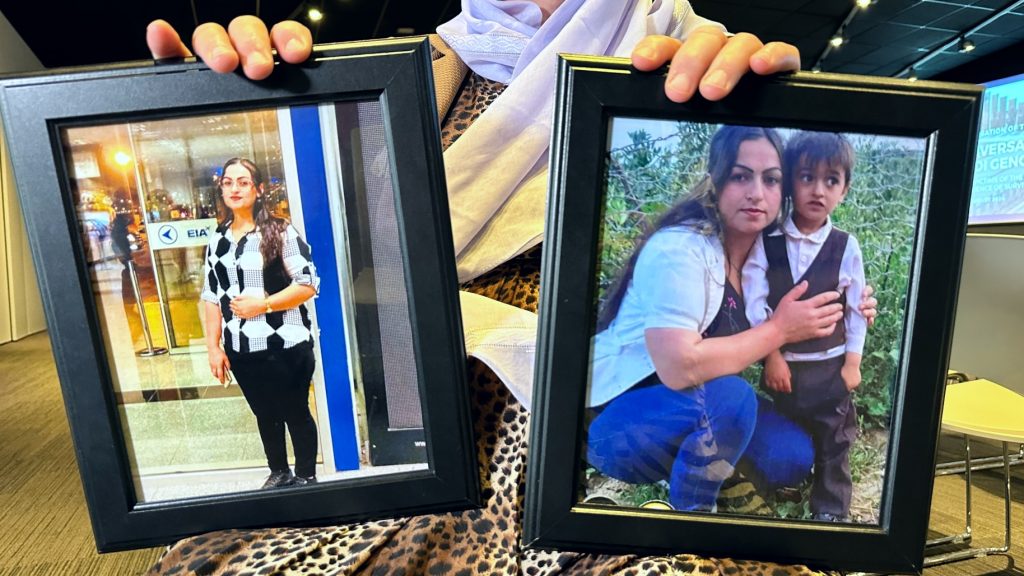Yazidi mother, daughter share story of capture by Islamic State and plea for loved ones to be brought to Canada
Posted August 3, 2024 5:07 pm.
Last Updated August 4, 2024 12:17 pm.
For many Yazidi people scattered across the world, not a day goes by without thinking of family.
Aug. 3 marks exactly 10 years since militants from the Islamic State group began waging an onslaught against the people, where many were forced to flee their homes, and thousands more were killed or abducted and forced into slavery.
Many people who found escape have been living in displacement camps. Nearly 2,600 Yazidis are still considered missing.
Yazidis, a religious minority based mainly in northern Iraq, follow an ancient religion that combines elements from Zoroastrianism, Christianity and Islam.
They were persecuted by the Islamic State in Iraq and Syria, who considered them heretics. In 2016, a United Nations report declared that the slaughter, sexual slavery, indoctrination, and other crimes committed against the 400,000 Yazidis amounted to genocide.
Saturday afternoon, Winnipeg’s small Yazidi community gathered at the Canadian Museum for Human Rights to commemorate the day and think of their loved ones — those killed, those still in captivity, and those still missing.
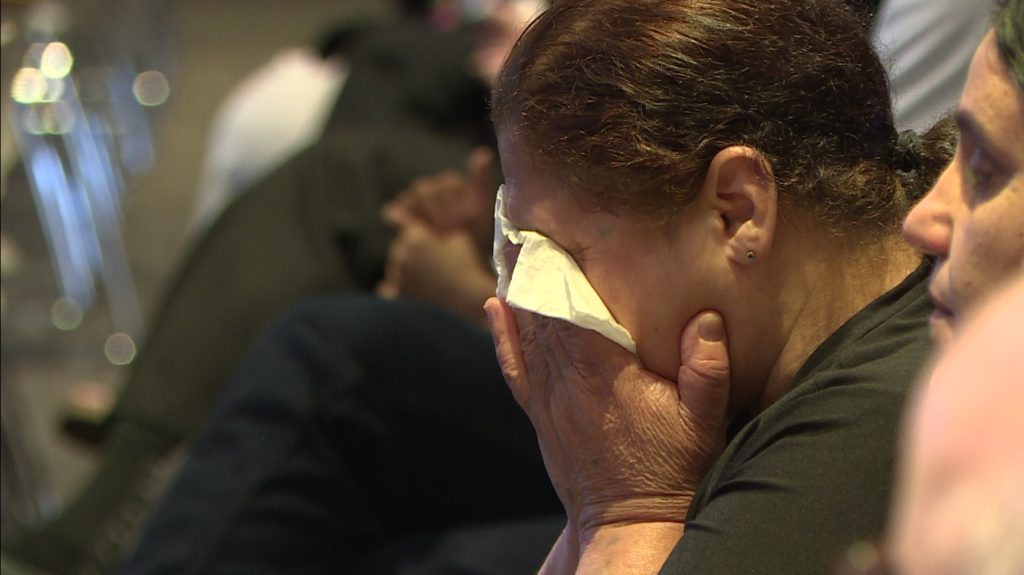
Some families allegedly receive updates about loved ones from posts by the Islamic State, including a mother and daughter who shared photos that were allegedly taken by ISIS militants of their family members being sold into slavery. According to the UN Syria Commision of Inquiry, Yazidi girls, some as young as nine years old, and women have been auctioned as slaves.
CityNews reporter Joanne Roberts sat down with Adol Bapier Ilyas and her daughter Ahlam Rafo, who share their story and pleas for family reunification.
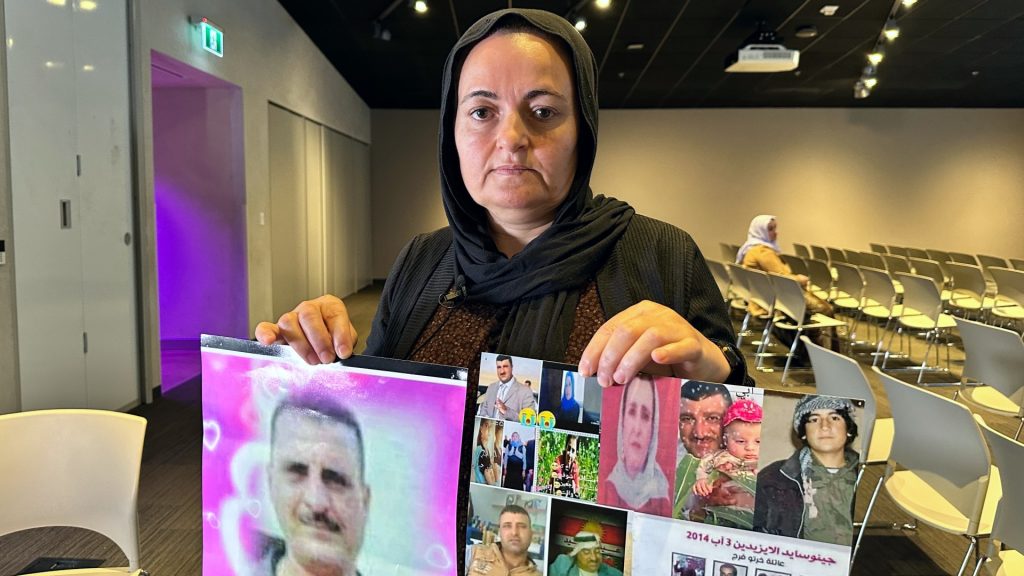
Ahlam Rafo
On August 3rd, 10 years ago, can you tell me where you and your family were, and what happened to you?
“On August 3rd, 2014, prior to that I was living in a small village called Hardan in northern Iraq, in the Sinjar region. I was living with my four kids, my husband and extended family. [We] lived in a small, peaceful home, very happy where my kids went to school. My husband went to work, and I did the housework. Very happy, very peaceful village and happy family. Until August 3rd of 2014, where ISIS swept through Yazidi villages and towns. Where we were not able to escape on August 3rd, we were stuck inside our homes until approximately 5 p.m.”
What happened the rest of that day?
“Another fellow villager came knocking on every single door … letting the people of Hardan know that ISIS swept through many Yazidi villages and towns already, and they are taking the women and children and killing the men. Shortly after 5 p.m. … we fled and we saw many bodies on the way. People laying in mass graves. They were shot dead. Many people running barefoot.
“We went through a couple of other Yazidi villages while fleeing. To name a couple, we passed Hanasur, that is another Yazidi village. And then we got to another village named Sinun. Inside of Sinun, unfortunately, my family and I were captured by ISIS.
“When we were taken captive inside Sinun, we had in a vehicle, it was myself, two out of my four children, my mother-in-law and my husband and a few other extended family members. In a couple of vehicles ahead of us, there was my brother-in-law’s extended family and two of my other kids were with them. We were all held captive and ISIS told us to drive back into Hanasur, where they were hauling Yazidis that they had captured.
“ISIS had full control of the area. We were all reunited in an open space, like a hall. It was filled with Yazidis.
“ISIS came and loaded everybody onto huge trucks and they drove us into Syria. They started driving at approximately 7:30 [p.m.] and they were driving until about 12 at midnight that same day. As well as some Yazidi men were driving their own vehicles, that ISIS had filled with Yazidis from that hall in Hanasur. ISIS militants were driving in the front and in the middle as well as in the back. That’s where their big trucks were, they were loaded with Yazidis. Yazidi drivers were driving in between their trucks. Anybody who drove slowly, [ISIS militants] would take out their guns and say they would kill them if they don’t speed up.
“They were trying to get us into a school hall named the School of Shadadia in Syria. We arrived at 12:00 p.m. at Shadadia school hall, where again everyone was gathered. In this hall, where they separated every family. They separated me from my husband and three boys. They kept my daughter and many other female members of the Yazidi family.
“The young children, women and girls were on the main floor of the school and they took the men and older boys on the top level of the school.
“For two days I did not see my husband and my boys, neither did any of the other female members of the Yazidi community. [ISIS militants] said they were waiting for a call from their commanders, ISIS commanders, to execute all of the male members of the Yazidi community that were in the hall. After two days they said they got the call but they won’t be killing the males. We were there for a few days where they took all the females outside. We slept in the school yard and the male members were inside the school where they weren’t allowed out or to mingle with their family members.
“After a few days, I was able to see my husband and older boys. They fed the women and the girls, ISIS militants, but they would not feed the men. My youngest boy, every time ISIS brought around meals, anything he could pocket, he would put in his pocket and say I will save it for my father because he hasn’t eaten in days.
“We were in that school for another eight days. After eight long days, the men and women were separated again. We were hauled in big trucks again, by ISIS militants, and we were driven back into Iraq. Women and girls were loaded in two big trucks and the men and older boys were also loaded into different trucks. The women and girls were driven to Mosul and the men and older boys were taken to Til-Banat.
“We were there for a number of months in Mosul, where ISIS militants would come and take the virgin girls. The younger girls, better-looking girls. The boys were separated.
“Every day there were air strikes, a few times throughout the day, for approximately 50 days where we were running from one spot to the next. Hiding under rubble, hiding under rocks. Hiding in everything and anything you could imagine.
“ISIS mostly moved us, driving at night, and avoiding driving during the day. Families were reunited. Each family was placed in a home in the village of Kocho, but it was surrounded. Each home was surrounded by ISIS militants. We were in Kocho for approximately two months, and anybody who tried to escape or didn’t do what ISIS said would be executed on the spot.”
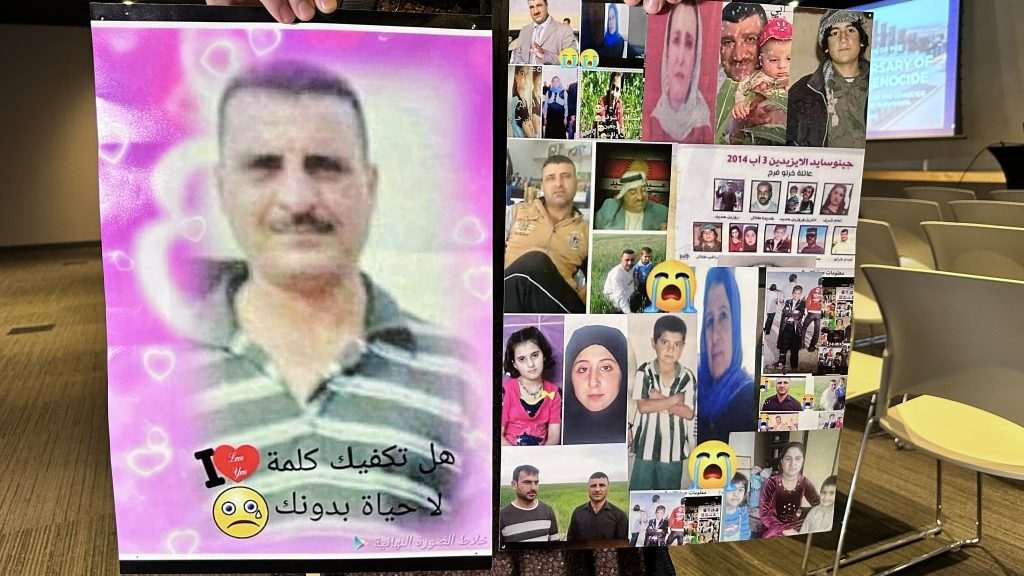
How did you eventually escape with the family that you have here in Canada?
“Men and women were separated again. My oldest son managed to escape with his uncle and his family. It was a long journey of five days, walking throughout long days and long nights until they reached safety in northern Iraq.
“After that, approximately six months later, I was sold between Iraq and Syria. I was in Syria, I was sold to someone for $15,000. After that, I managed to escape to safety and three days later, my daughter managed to escape. Shortly after that, my daughter and I were reunited.
“My two kids: my daughter and my oldest son, we were reunited in a refugee camp in the Kurdistan Region of Iraq.”
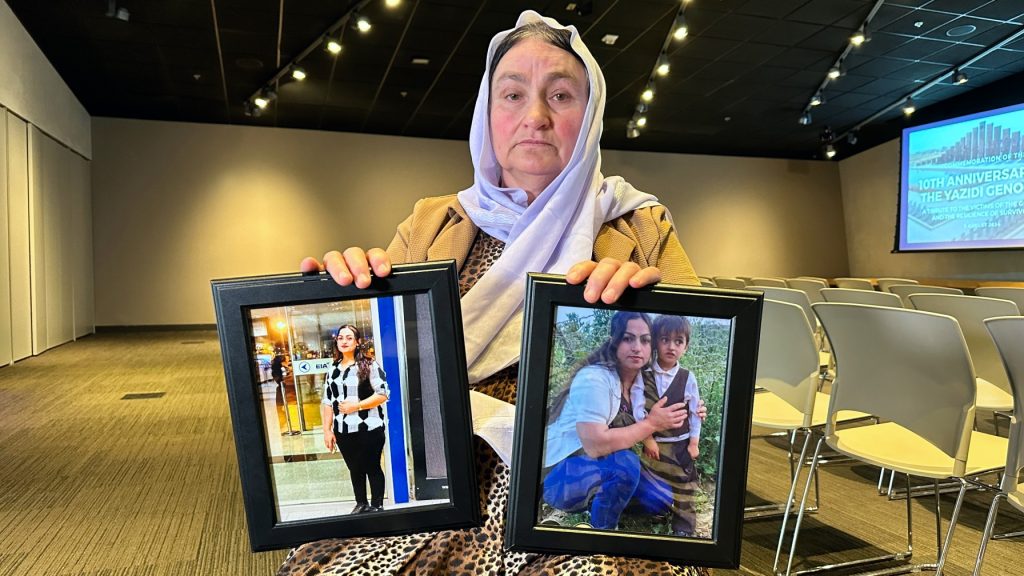
Adol Bapier Ilyas
When Adol Bapier Ilyas sat down to speak with CityNews, she pulled two framed photographs from her bag and began to cry. She alleges her daughter, pictured in the photographs, was killed in a bombing by the Islamic State early last month.
Can you tell me who this is?
“This is Suhan, my daughter. (She died on) July 2nd, 2024.”
When was the last time you could speak to her?
“I spoke to her on the phone three days before she passed.”
Where was she living at the time?
“She lived in a refugee camp called Khanke Camp, in the Kurdistan Region of Iraq.”
Were you waiting to bring her to Canada?
“I came to Canada in 2017, and ever since I arrived here, I have been begging and advocating for my children and asking to be reunited with my four children.”
What message do you have for Canadians that are going to be watching this today?
“Two weeks ago, I had four children struggling in refugee camps. Two weeks ago I lost my daughter. I now have three children and two grandchildren, Suhan’s children, who luckily survived the bombing. Please help me reunite with my children and my grandchildren and let this be the last tragic event that any Yazidi family faces in refugee camps.”
